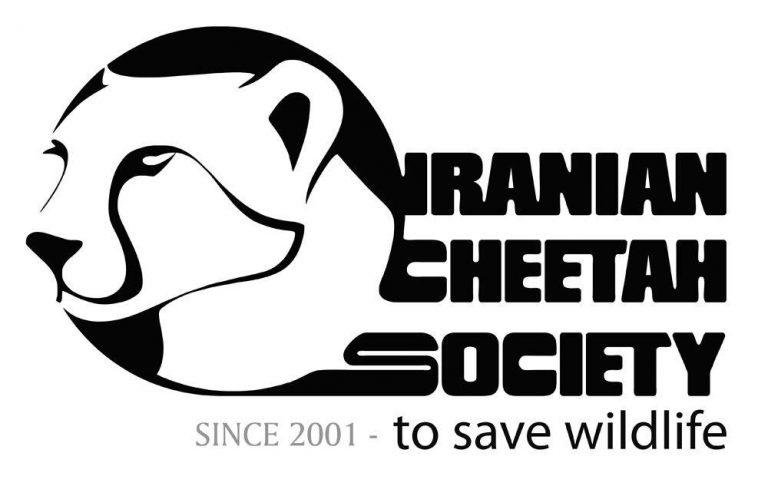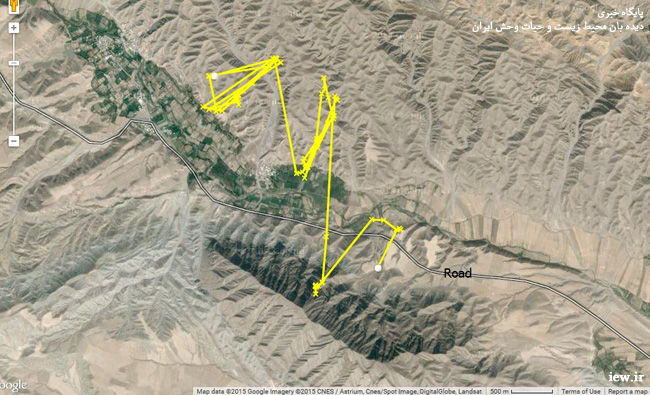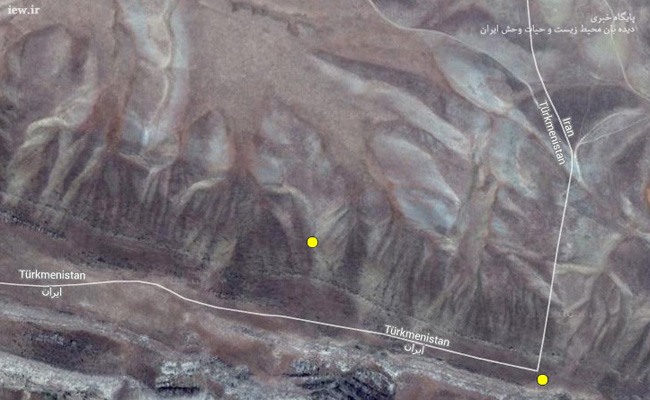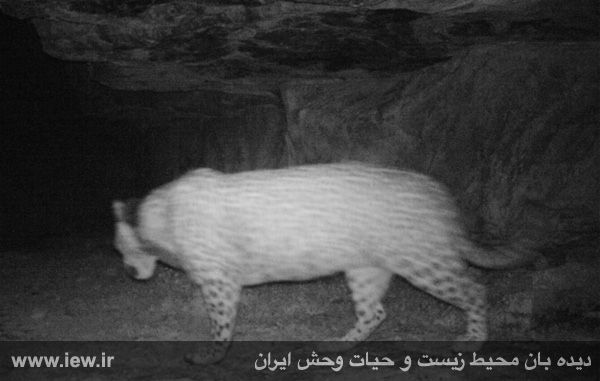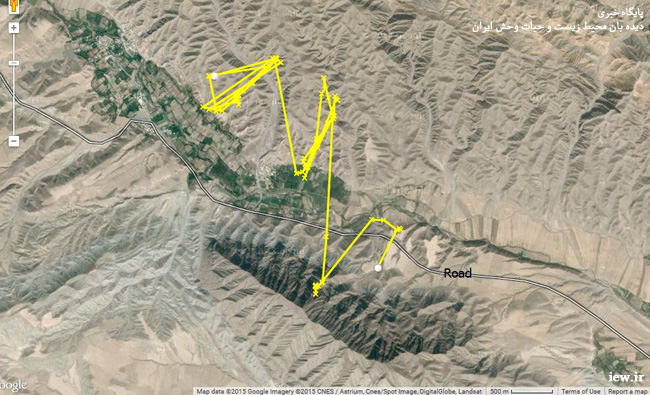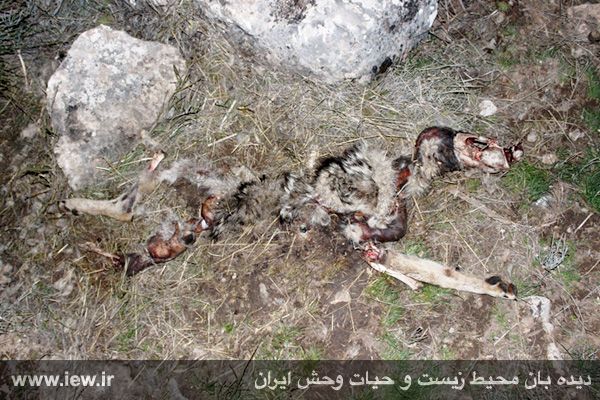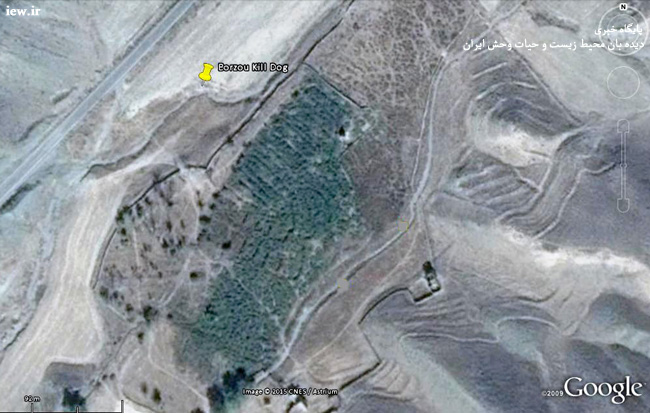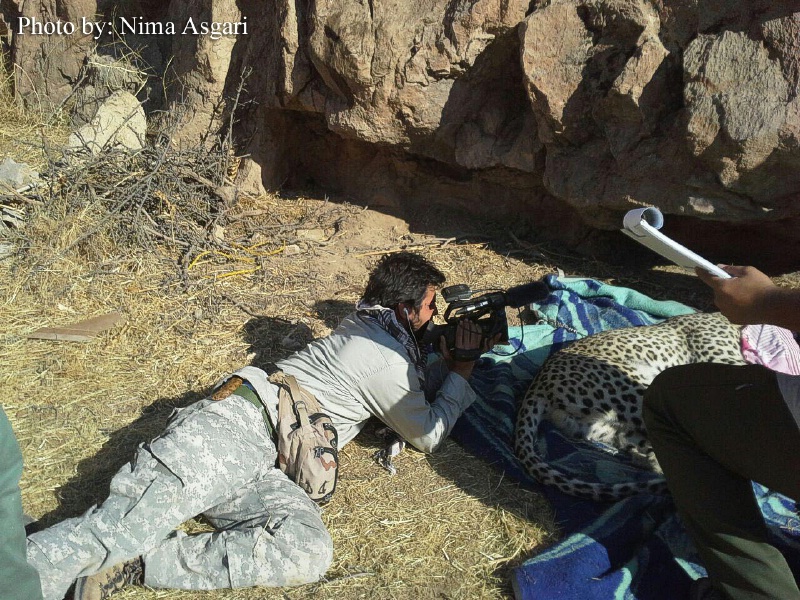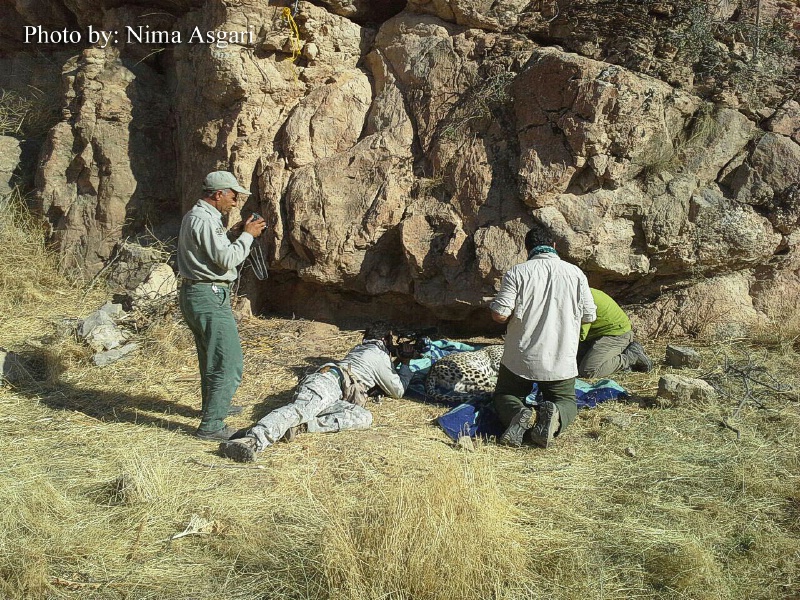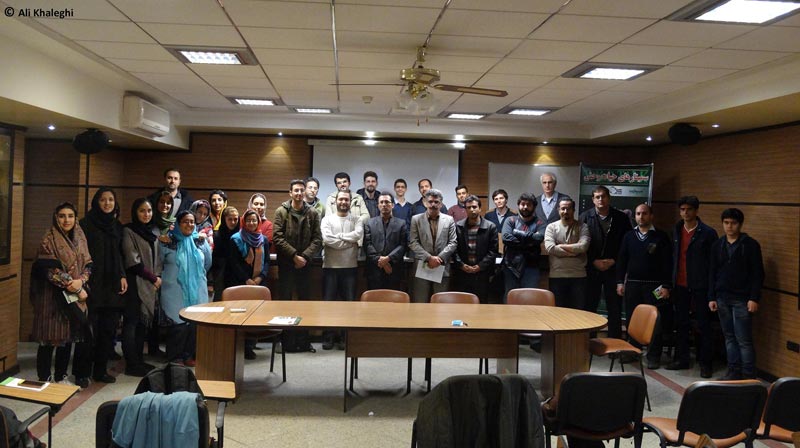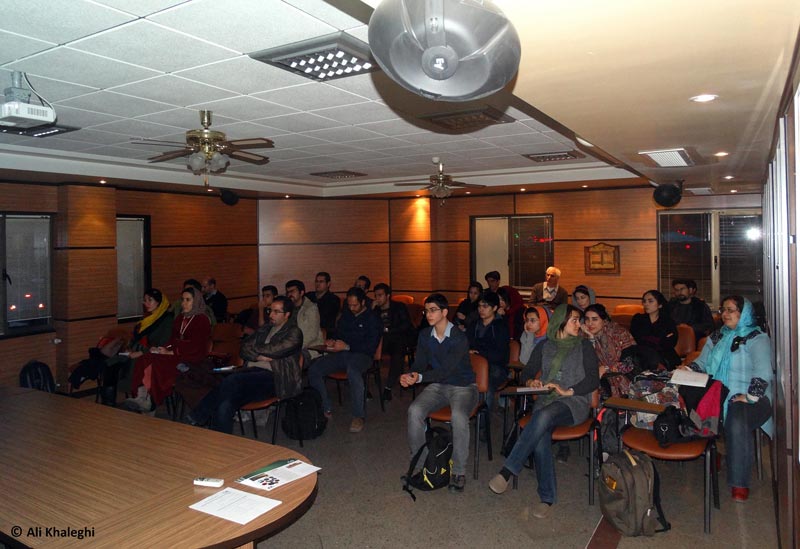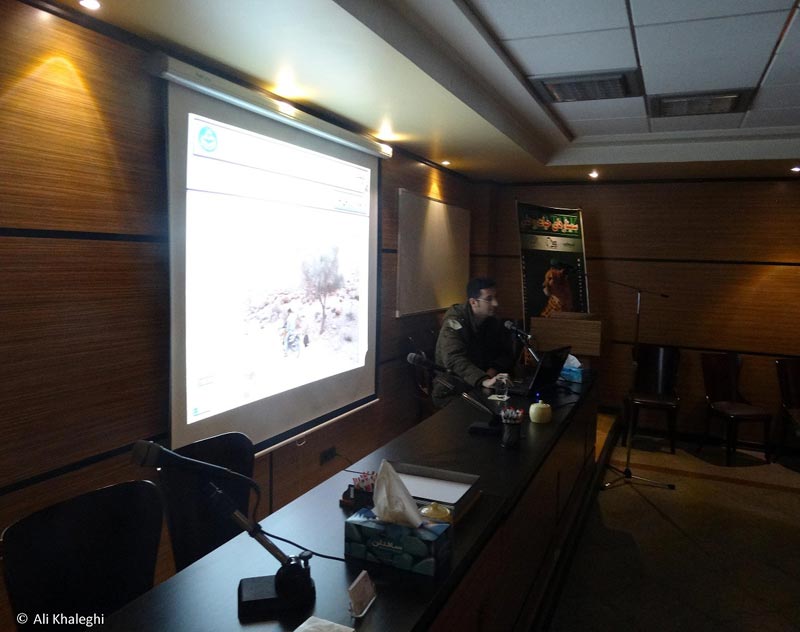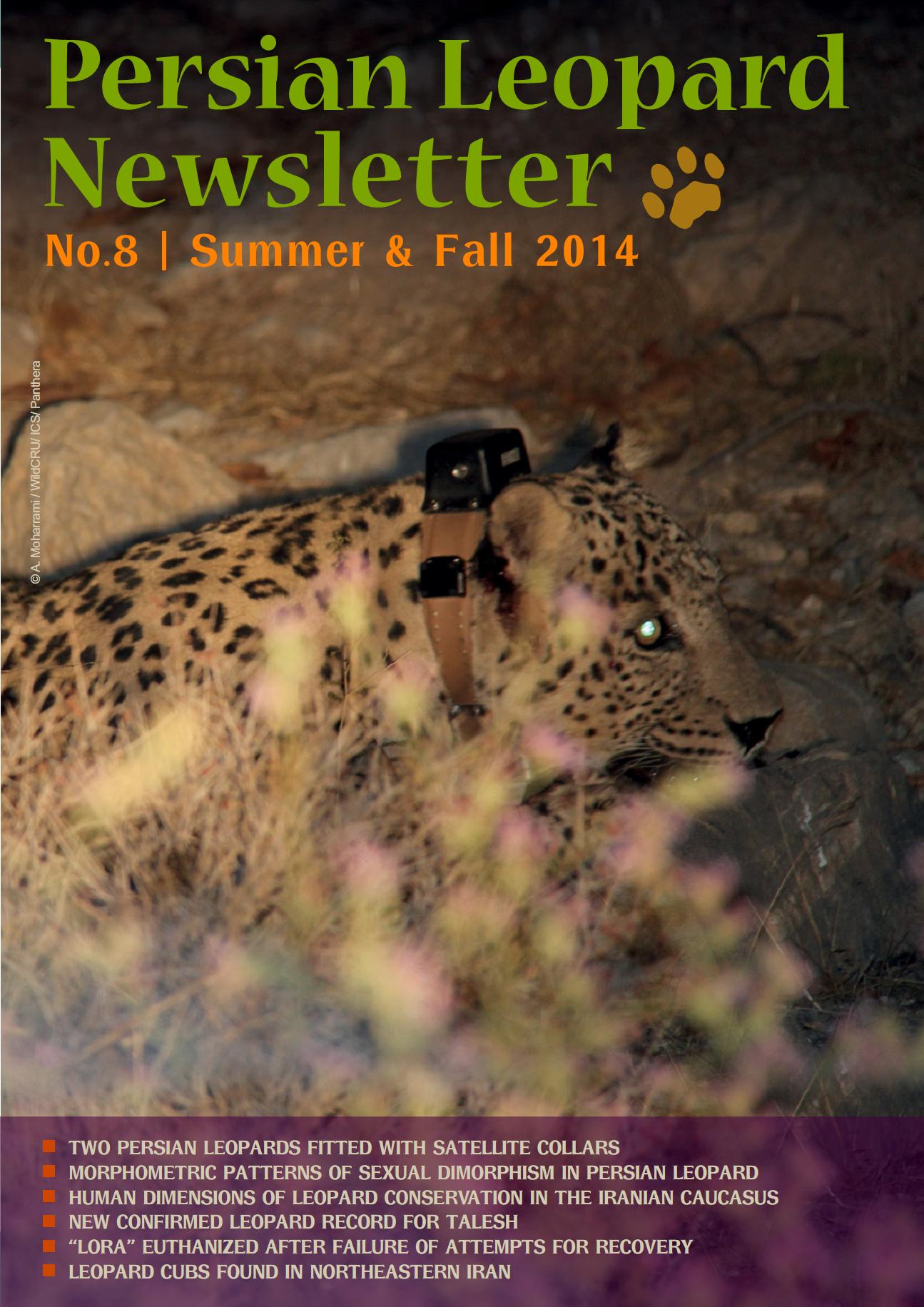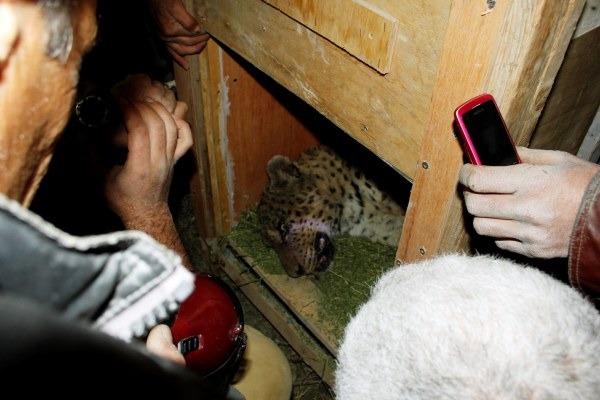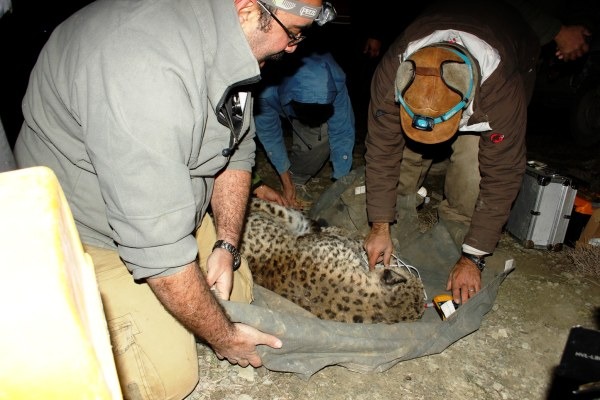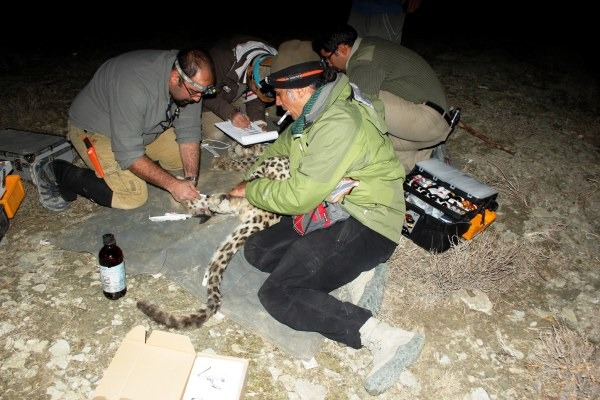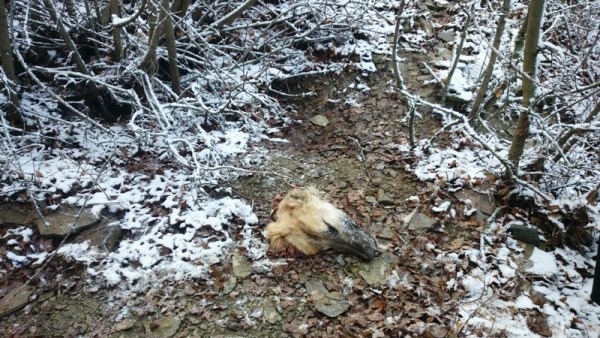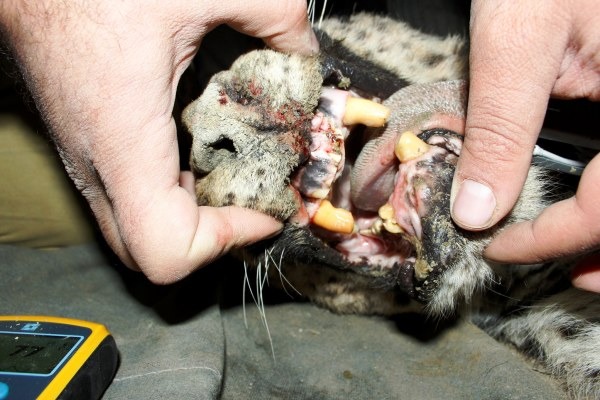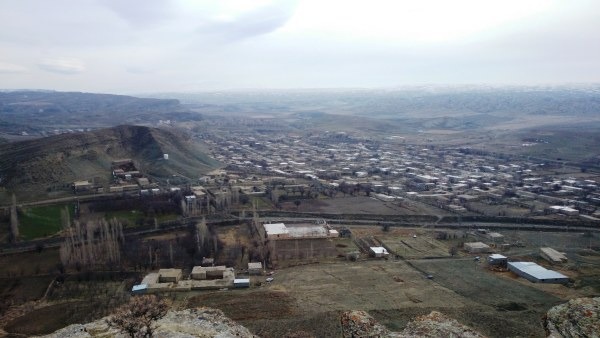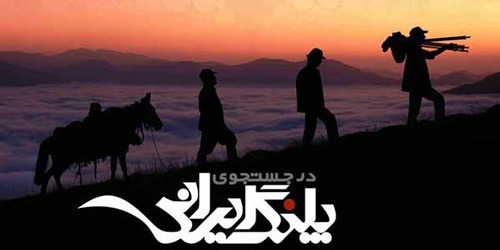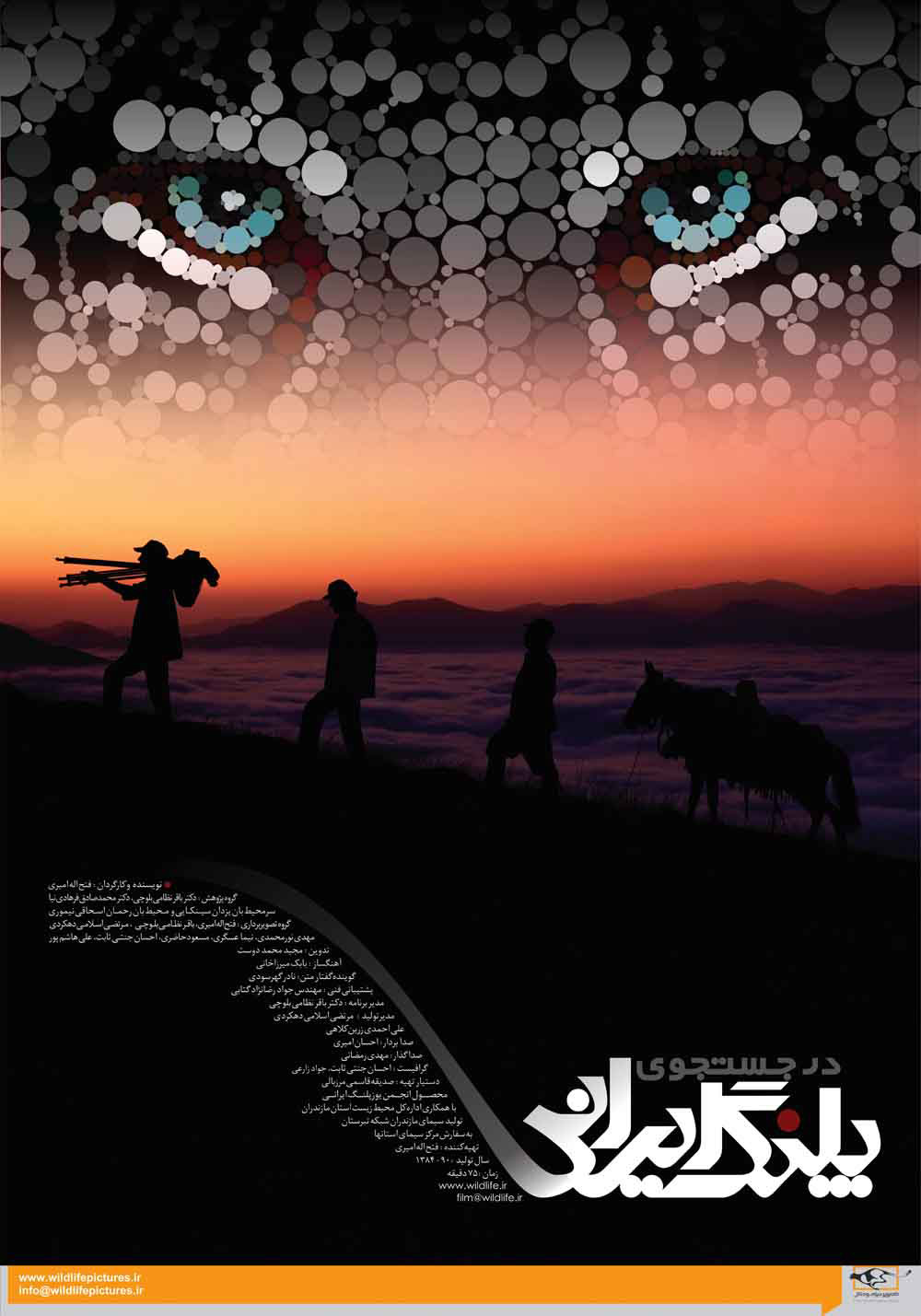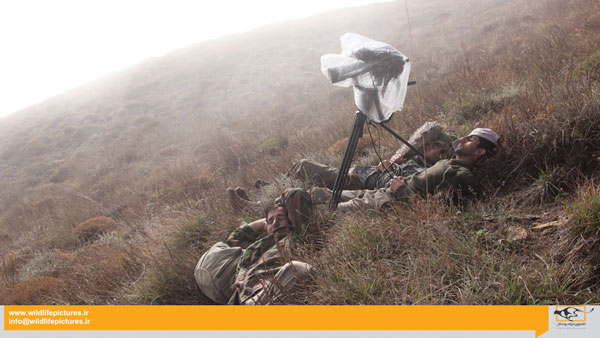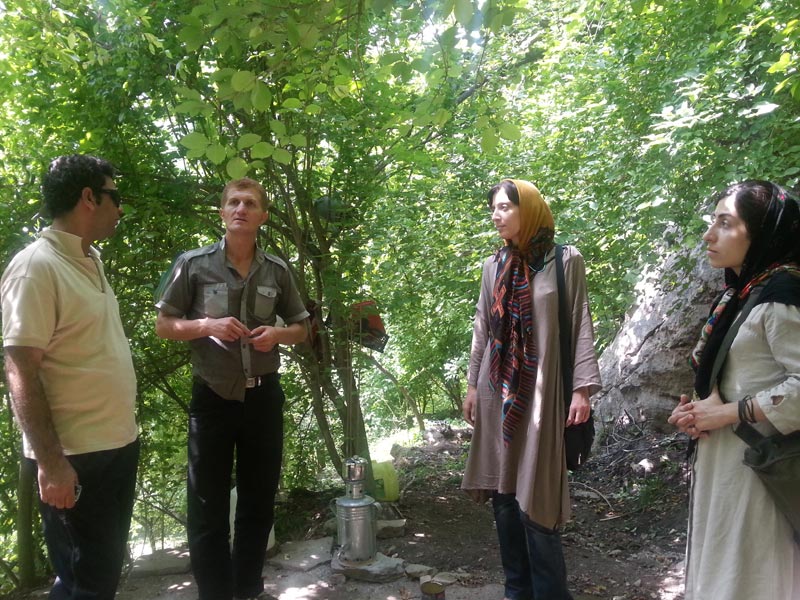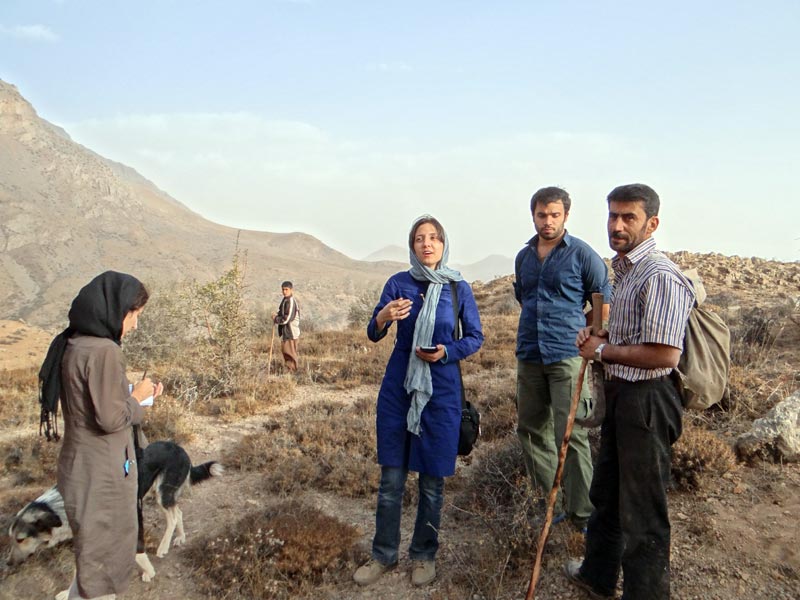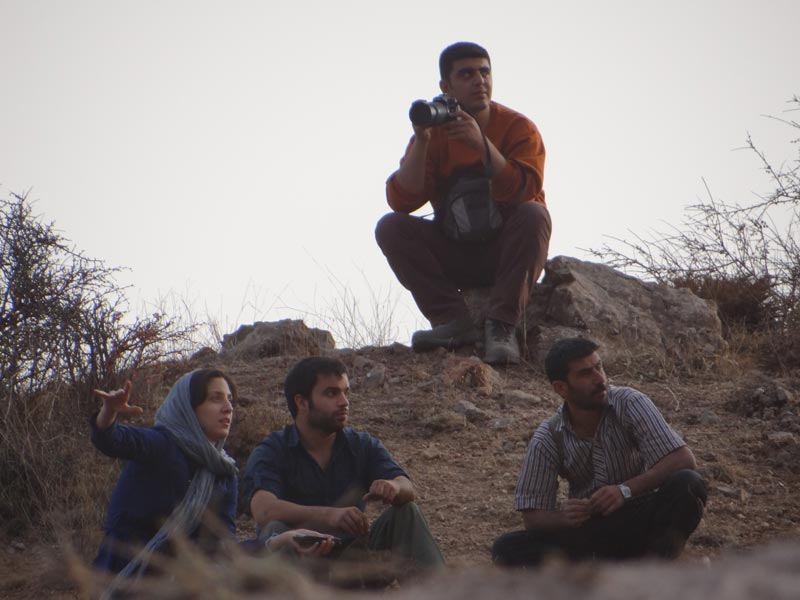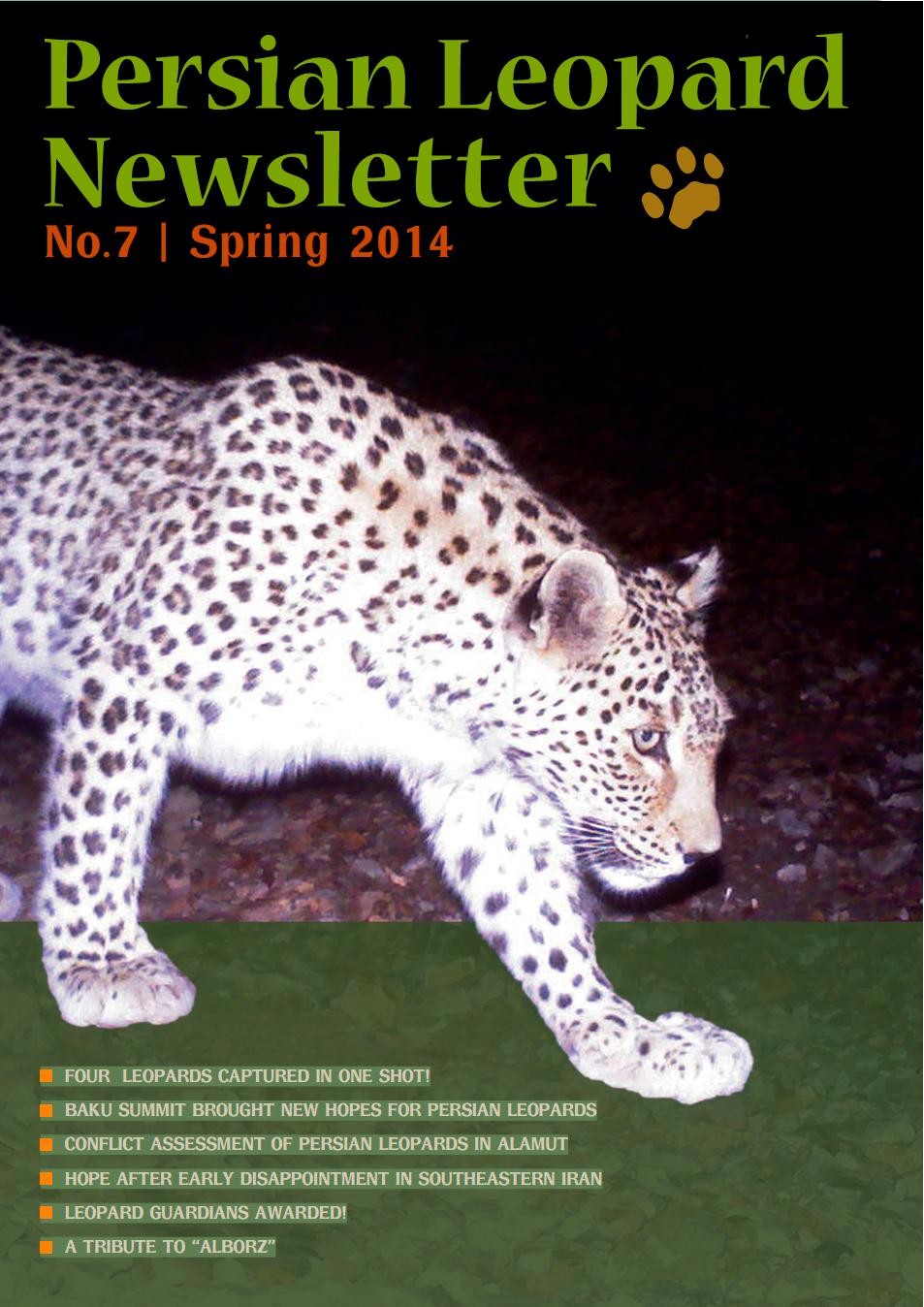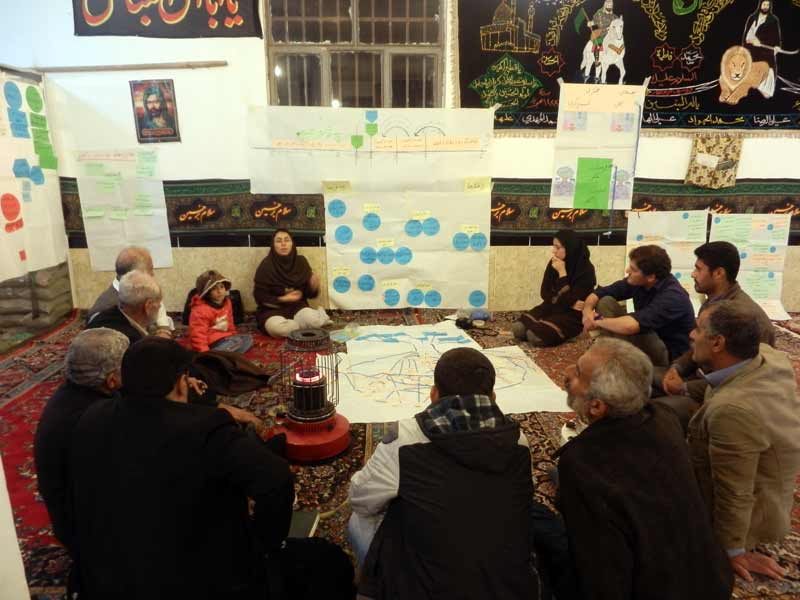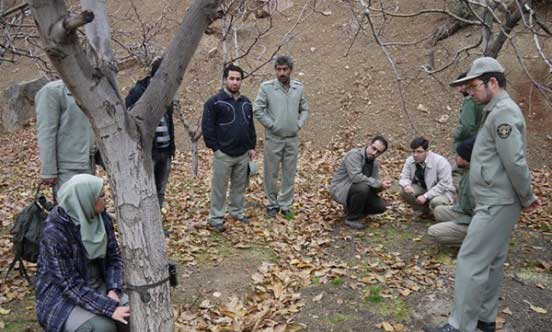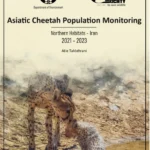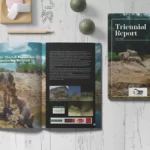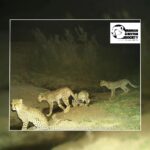On October 5th, 2015, one of the four male Persian leopards GPS-collared within the Persian Leopard Project in north-eastern Iran crossed Iran-Turkmenistan border. “Borzou”, an old male of over 10-years-old, has been continuously monitored since 22st of February 2015, when he was captured in Tandoureh National Park, Razavi Khorasan province. Bordou has been roaming outside the national park since September 26th, and has walked around 20 km through several villages and human development areas to reach the border with Turkmenistan.
The yellow circle in left shows the first GPS location of Borzou in Turkmenistan that the research team received after he crossed the border (white line).
The research team led by Iranian Cheetah Society’s senior research Mohammad Farhadinia, has been closely working with local wildlife authority and decision makers during this period to minimize the risk of human-leopard interactions. There has been no claim of livestock loss or attack to human due to leopards by local people during this period. Interestingly, Borzou remained unspotted within this human-dominated landscape before crossing the border into the Turkmenistan’s Kopet Dag Mountains.
Borzou photographed in Tandoureh National Park, northeastern Iran, before starting his journey to the nearby Turkmenistan
The Borzou’s successful dispersal to Turkmenistan is the first verifiable record of leopard movements between Iran and Turkmenistan, stressing the need for transboundary cooperation and conservation initiatives between these two countries. The research team now tries to contact Turkmen authorities to ensure Borzou’s safe journey inside this country.
GPS locations and track lines show Borzou movement pattern around two mounths ago when he left the national park
This is not the first time that Borzou leaves its territory in TandourehNational Park. Around two months ago he left the reserve and spent 23 days in the surrounding villages, where he killed several domestic dogs and one wild ewe.
Remains of domestic dog killed by Borzou on the outskirts of a village in periphery of Tandoureh National Park, northeastern Iran
The Ecology and Conservation of the Persian Leopard in Northeastern Iran Project is Mohammad’s PhD with University of Oxford’s WildCRU, and is running in collaboration with the Iranian Cheetah Society, Iran Department of the Environment, Razavi Khorasan Provincial Office of Iran Department of the Environment, and Panthera.
The yellow landmark shows location of the domestic dog killed by Borzou near a fruit orchard next to a local road to the village
